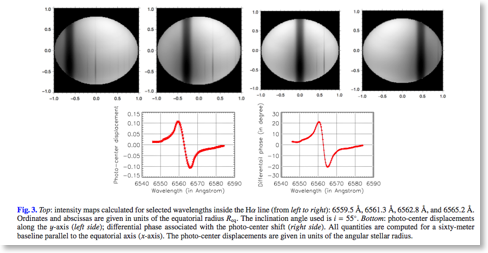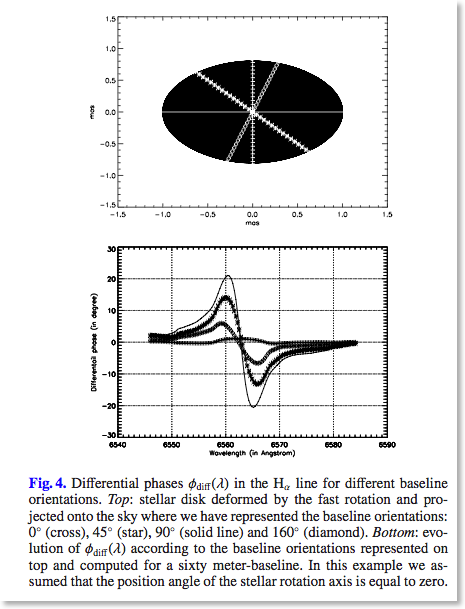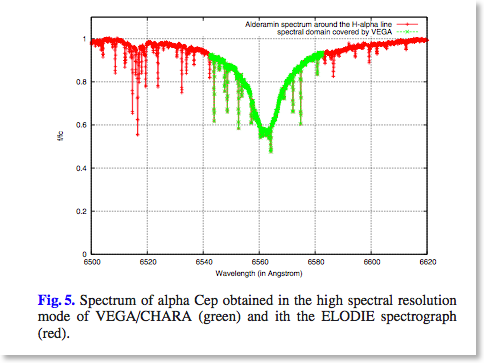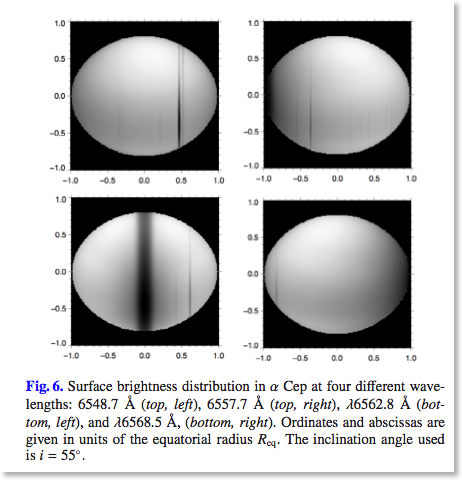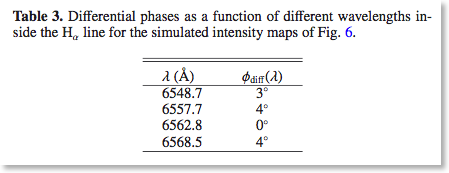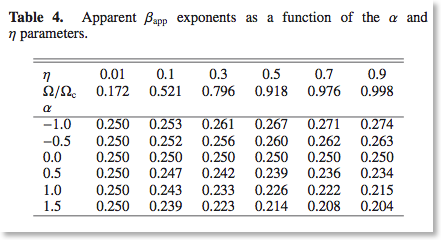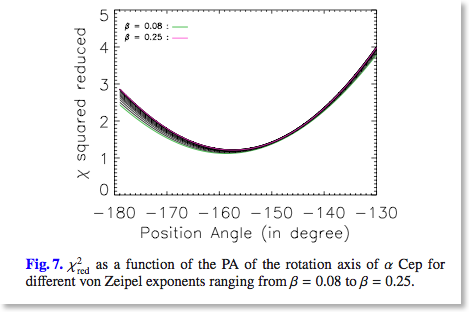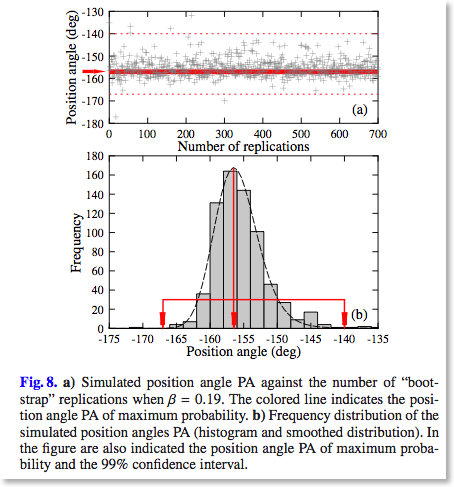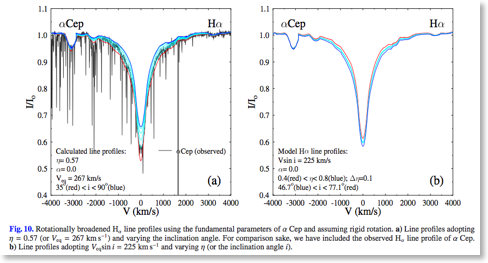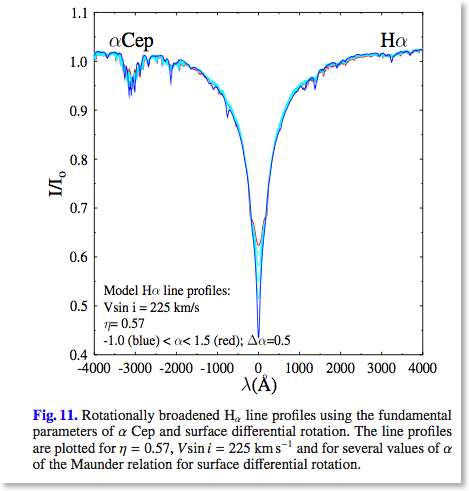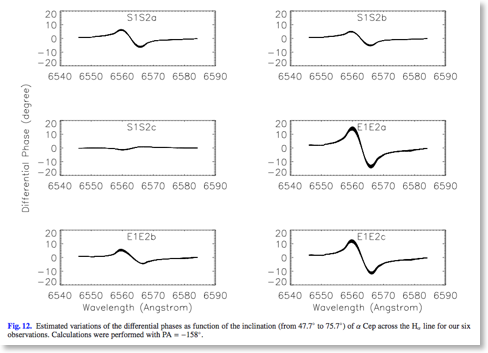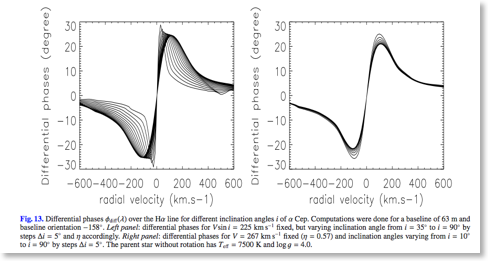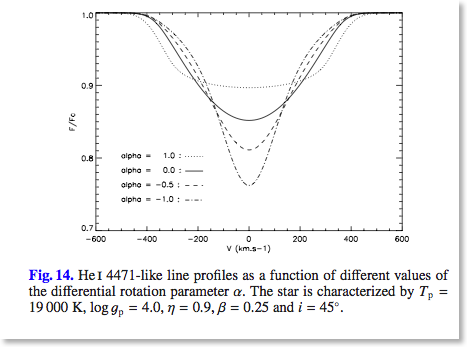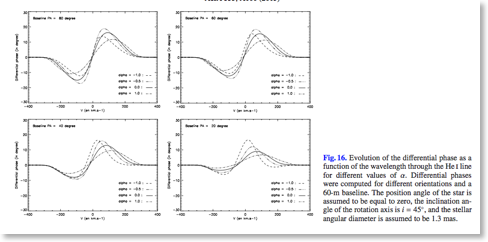By O. Delaa, J. Zorec, A. Domiciano de Souza, D. Mourard, K. Perraut, Ph. Stee, Y. Frémat, J. Monnier, S. Kraus, X. Che Ph. Bério, D. Bonneau, J. M. Clausse, M. Challouf, R. Ligi, A. Meilland, N. Nardetto, A. Spang, H. McAlister, T. ten Brummelaar, J. Sturmann, L. Sturmann, N. Turner, C. Farrington and P. J. Goldfinger 2013, A&A, 555, A100
When a given observational quantity depends on several stellar physical parameters, it is generally very difficult to obtain observational constraints for each of them individually. Therefore, we studied under which conditions constraints for some individual parameters can be achieved for fast rotators, knowing that their geometry is modified by the rapid rotation which causes a non-uniform surface brightness distribution.
We aim to study the sensitivity of interferometric observables on the position angle of the rotation axis (PA) of a rapidly rotating star, and whether other physical parameters can influence the determination of PA, and also the influence of the surface differential rotation on the determination of the β exponent in the gravity darkening law that enters the interpretation of interferometric observations, using α Cep as a test star.
We used differential phases obtained from observations carried out in the Hα absorption line of α Cep with the VEGA/CHARA interferometer at high spectral resolution, R = 30 000 to study the kinematics in the atmosphere of the star.
We studied the influence of the gravity darkening effect (GDE) on the determination of the PA of the rotation axis of α Cep and determined its value, PA = −157-10°+17°. We conclude that the GDE has a weak influence on the dispersed phases. We showed that the surface differential rotation can have a rather strong influence on the determination of the gravity darkening exponent. A new method of determining the inclination angle of the stellar rotational axis is suggested. We conclude that differential phases obtained with spectro-interferometry carried out on the Hα line can in principle lead to an estimate of the stellar inclination angle i. However, to determine both i and the differential rotation parameter α, lines free from the Stark effect and that have collision-dominated source functions are to be preferred.
